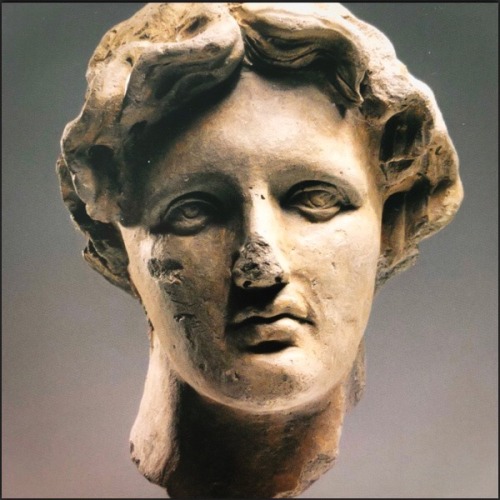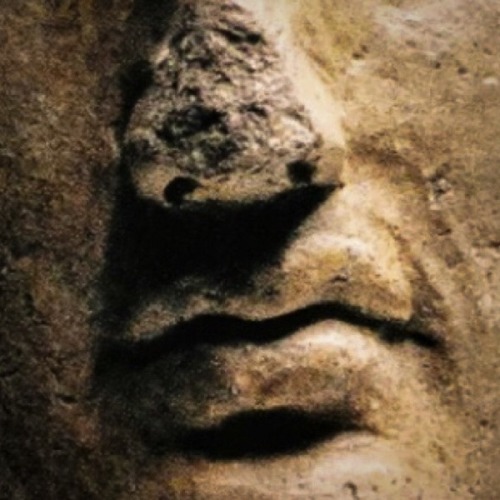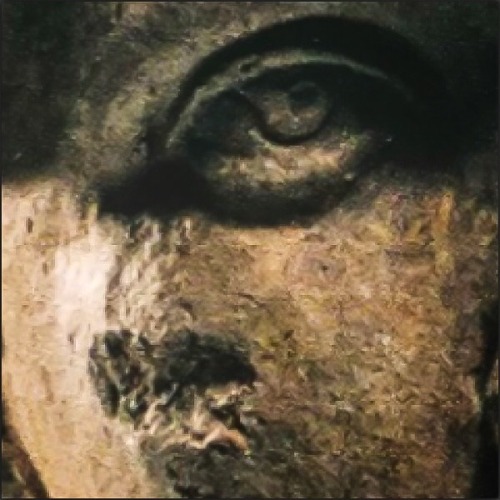#hermitage amsterdam
Head of a man
Campania, 3rd century BC.
The head of a young man with wavy hair falling over the middle of the forehead. The physiognomic features correspond to one of the types of iconography of Alexander, a much earlier and better known example which is the bone portrait of the king found in the tomb of Philip II at Vergina (Archaeological Museum, Vergina).
The same image appears in a mosaic in the House of the Faun at Pompeii, depicting the battle of Alexander and Darius, assumed to be a reproduction of a painted original. That would have been the magnificent work mentioned by Pliny, painted by Philoxenes from Eretria for Cassander´s palace in Pella in the last years of Alexander´s life or shortly after his death. At the same time, the treatment of the terracotta to make it look like a work in bronze, such as the use of the chisel to mark pupils and irises, the small lines at the corners of the lips and the manner of portraying locks of hair, are characteristic of Italian work.
Source: The Immortal Alexander the Great, Hermitage Amsterdam 2010.
Post link



